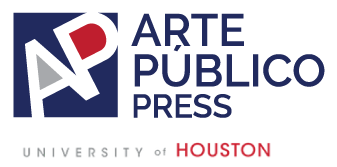The Golden Flower: A Taíno Myth From Puerto Rico
$18.95
An enchanting English-language picture book that recreates the indigenous legend of how Puerto Rico became an island.
by Nina Jaffe
Illustrations by Enrique O. Sánchez
ISBN: 978-1-55885-452-9
Published: 31 May 2005
Format: Hardcover
Pages: 32
Imprint: Piñata Books
Age: 4-8
Available
The syncopated prose of Nina Jaffe draws the reader to the island of Puerto Rico, back before the Spaniards arrived. The island was inhabited by the Taínos, and they called their beloved island, Boriquén. This is their story of how Boriquén came to be.
In the beginning, there is only a giant mountain above a dry plain without water or plants. When a child walks over the flat land below the mountain, he finds seeds dancing in the wind. When he plants the seeds on the top of the mountain, a forest grows on the crest and in that forest, a large golden flower appears. Soon, the boy and his community reap benefits that they had never before imagined.
A joyful creation myth about the evolution of a beautiful island habitat, this picture book, originally published by Simon & Schuster, is also a celebration of the young boy’s quest, which encourages young readers, ages 4-8, to respect the gifts of the winds and the cycle of nature that bears fruit for the whole community.
Jaffe’s adaptation of this traditional folktale common to indigenous peoples of South America and the Caribbean stemmed from her encounter with a Spanish-language text by Carmen Puigdollers, “Como se formó la bella isla de Boriquén,” and research in Puerto Rico.
Afterword from Nina Jaffe:
I first encountered this magical tale of the Taino people in a Spanish text by Carmen Puigdollers*. I began to retell it in schools and libraries. In 1993, Lilian Ayala, a Spanish teacher in New York City, told me that she remembered hearing her mother tell this same story at family gatherings, when she was growing up in Puerto Rico. In my research, I learned that stories in which the sea was hidden inside a pumpkin calabaza) were common among many of the native cultures in South America and the Caribbean.
The Taino called this island home Boriquén ( bo-ree-KEN),which means “”land of the brave lord.”” They were a peaceful people who survived by hunting and fishing in the rich tropical forests and planting in their own fields. Their houses, called bohios (bo- EE-ohs), were made of wood and cane rooted with straw. The Taino chief was called a cacique (kah-SEE-kay), and it was he who told the myths and legends during the areito (ah-RAY-toh) ceremonies.
After Columbus landed his ships on the islands’ shore in 1493, the Spaniards conquered Boriquén. The Taino were enslaved. Most of them died. Despite the destruction of their people, many words in Puerto Rico today come from the Taino language. Taino foods are still cooked, Taino instruments are still played, and Puerto Ricans still proudly call their island “Borinquen” in honor of the Taino heritage that is such an important part of their history and culture.
*Puigdollers, Carmen. “Como se formó la bella isla de Borinquen” in Presencia Taina. Cambridge, MA, National Assessment and Dissemination Center, Lesley College, 1979.









